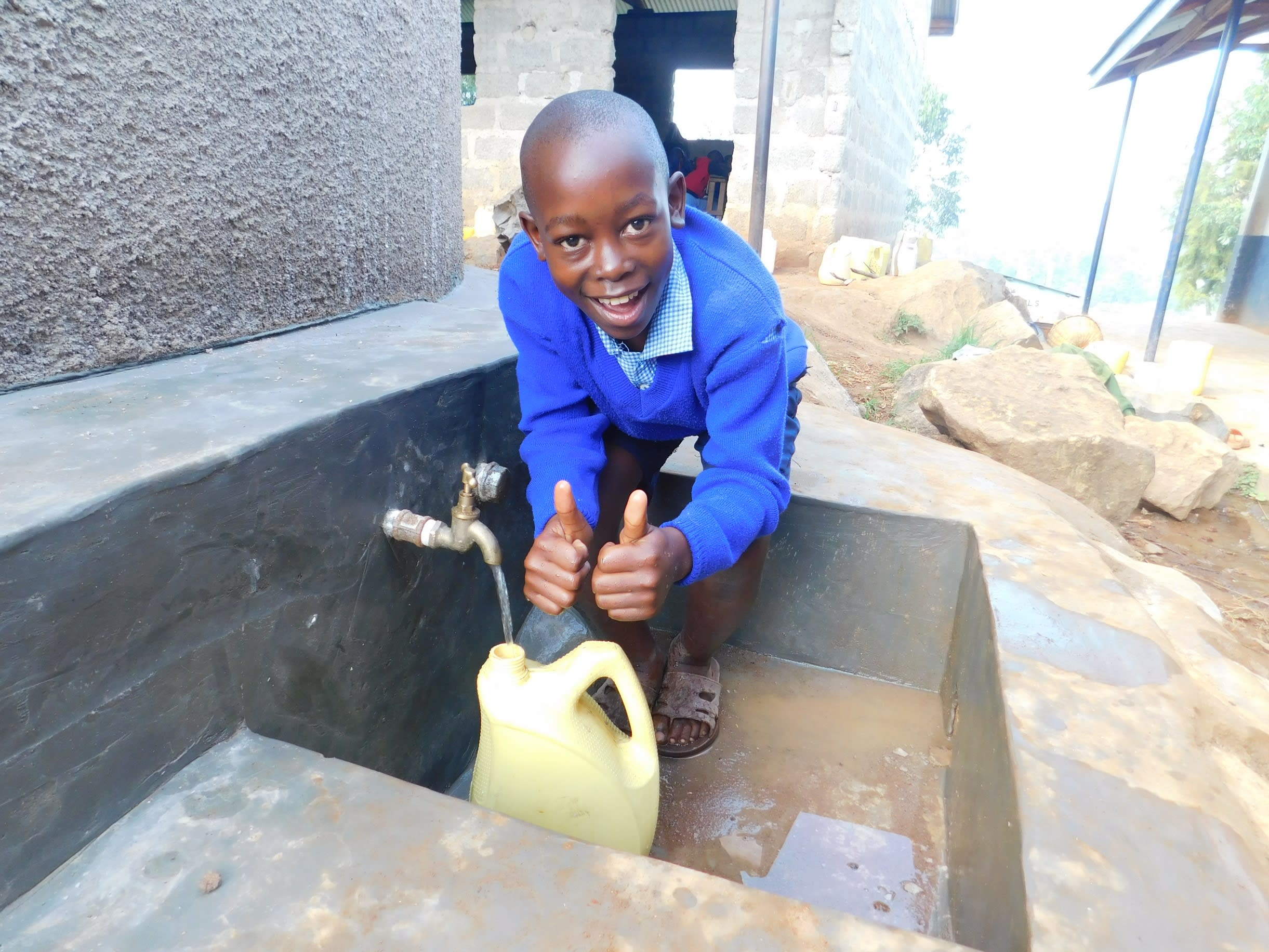The majority of people living around JM Rembe Primary School grow crops like maize and beans. Children and women spend the vast part of their days fetching water for home and school, because of the acute water shortage affecting the entire community. Parents send water they've gathered and food they've grown with their kids to support the school's lunch program.
JM Rembe Primary School has a total enrollment of 498 students and employs nine teachers and two support staff.
Water
JM Rembe Primary School does not have a source of water. Instead, students go out into the surrounding community to find water. The preferred source is Kobala Spring, but that dries up during the months it doesn't rain. They'll go to fill their containers by dunking them in an open, dirty spring running through Rembe during the dry season.
There a small plastic tank at school where they store the water gathered by students, staff and parents. The water from Kobala Spring is much safer for the children to drink, but both water sources cause issues during the dry months. Water gets turbid at other times, and after drinking it students suffer from waterborne diseases.
Even if sickness is avoided for a few weeks, students already miss valuable study time when they leave school to find water.
Sanitation
There are eight filthy pit latrines split between boys, girls, and staff. There are no hand-washing stations.
"This entire community is a mess, and that mess is brought to the school. People are still illiterate and unschooled, and the few learned ones are just teachers," Teacher Alice Wamane said.
"Furthermore, we do not have any health professionals to help us overcome the issue of unhealthy living. That is why diseases and unwanted deaths are very common."
Here's what we're going to do about it:
Training
Training will be held for two days. The facilitator will use PHAST (participatory hygiene and sanitation transformation), ABCD (asset-based community development), CTC (child to child), lectures, group discussions, and handouts to teach health topics and ways to promote good practices within the school. The CTC method will prepare students to lead other students into healthy habits, as well as kickstart a CTC club for the school. This CTC club will oversee the new facilities, such as hand-washing stations, and make sure they are kept clean and in working condition. The two hand-washing stations will be delivered to the school, and the club will fill them with water on a daily basis and make sure there is always a cleaning agent such as soap or ash.
VIP Latrines
Two triple-door latrines will be constructed with local materials that the school will help gather. It will be up to the school to divide these six latrine doors between the students to make both boys and girls comfortable. And with a new source of water on school grounds, students and staff should have enough to keep these new latrines clean.
Rainwater Catchment Tank
A 50,000-liter rainwater catchment tank will help alleviate the water crisis at this school. The school will also help gather the needed materials such as sand, rocks, and water from the spring for mixing cement. Once finished, this tank can begin catching rainfall that will be used by the school’s students and staff. They will no longer have to rely on dirty surface water!
We and the school strongly believe that with this assistance, standards will significantly improve. These higher standards will give students the chance they deserve to study hard and get good grades.
This project is a part of our shared program with Western Water And Sanitation Forum (WEWASAFO). Our team is pleased to provide the reports for this project (formatted and edited for readability) thanks to the hard work of our friends in Kenya.

 Rainwater Catchment
Rainwater Catchment
 Rehabilitation Project
Rehabilitation Project







































